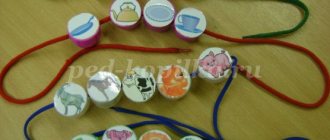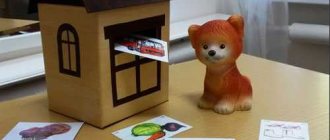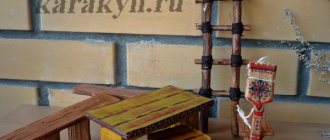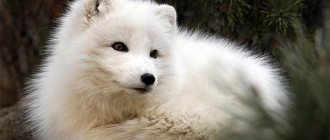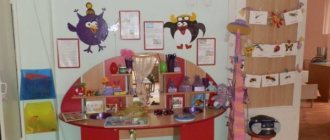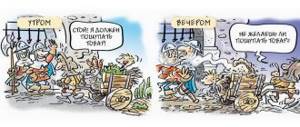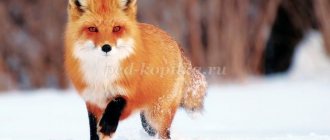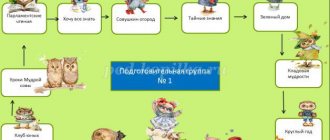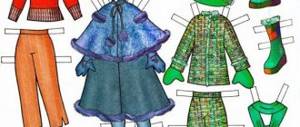As you know, different species of animals and plants are distributed unevenly around the globe. Some people can live only in forest conditions, while others need fresh water. Depending on external conditions, living beings form a natural community, each of which has its own distinctive characteristics and is of great value to the biosphere.
What is a natural community called?
A natural community is a group of living beings (plants, animals, microorganisms) together with the inanimate nature that surrounds them. In such communities, each organism has a great influence on all the others and, in turn, is influenced in return.
All components that make up the natural community interact very closely with each other. As a result of this interaction, the circulation of matter and energy in nature became possible.
Rice. 1. The cycle of substances in nature.
Species diversity in natural communities depends on two factors :
- climatic conditions - the more favorable they are, the more species are included in the community;
- type of plant community - in the desert and semi-desert there are about 20 of them, in the forest - about 100.
Natural communities are also distinguished by origin. They can be either natural or artificial, that is, created by man.
TOP 4 articles that are read along with this
- 1. Power circuit
- 2. Natural areas of Russia (grade 4)
- 3. Man and nature
- 4. Nature of Russia
Examples of natural communities include forest, meadow, fresh water, swamp, steppe, desert, and ocean. They all differ in the area they occupy, the number of species and the characteristics of the interaction between them.
Rice. 2. Natural community Meadow.
Types of natural communities
Floodplain meadow
Communities are based on various natural processes. Plants and animals occupy the same territory for a long time. There are a huge number of natural communities on Earth; it is impossible to list them all. The largest of them differ significantly from each other. The diversity of communities is judged by the composition of vegetation.
Some examples of natural communities include forest, steppe, meadow, field, garden, swamp, lake or river.
Biogeocenoses dominated by woody plants are called forests. Depending on which tree species predominates, spruce, birch, oak, pine and other forests are distinguished. Shrubs and tall grasses grow under the canopy of trees. There are low-growing plants, mosses and lichens. Bacteria and insects live in the litter. The forest is home to many animals, both herbivores and carnivores. Birds build nests in the treetops.
In the steppe, unlike the forest, there are very few trees. The community is a plain covered with short grass with thin leaves. The steppe is characterized by dry summers and little snow in winters. Animals are predominantly nocturnal. Most birds fly away for the winter.
The meadows are dominated by forbs. During the flowering period, plants attract a huge number of pollinating insects. Beetles, locusts and caterpillars eat succulent greens. The soil contains microorganisms that process organic remains, making it more fertile. The animal world is represented by small rodents, which are hunted by birds of prey.
The aquatic community includes fungi, bacteria, phytoplankton, zooplankton, birds and fish. Reservoirs are characterized by high liquid density, low oxygen saturation, and slight temperature fluctuations.
Food connections
The most important form of communication in any natural community is food connections. They consist of several links:
- The very first, main link is plants. They play an important role in natural communities. They are the only organisms on the planet that can create organic matter from solar energy, carbon dioxide and minerals found in water or soil. As a result, they become a valuable source of food and energy for other living things.
- Herbivores eat plants.
- In turn, herbivores serve as food for predators - carnivores.
Also, the natural community includes organisms that feed on various wastes: the remains of dead plants or animals, their excrement. This role of natural orderlies is performed by earthworms and burying beetles.
Bacteria and molds play the main role in the decomposition of organic matter. It is thanks to them that plant and animal remains decompose into the state of minerals that plants feed on.
Natural community structure
Food chain levels
The structure of a natural community is the movement of substances from one organism to another, and then again into the environment. Solar energy and inorganic substances are a source of nutrition for autotrophs. This is the name given to living organisms that synthesize organic matter, the basis of any natural community. The next link is heterotrophs. These are bacteria, fungi and animals that consume organic substances created by autotrophs. Another participant is bacteria and fungi, which decompose organic matter into inorganic compounds.
Human influence on natural communities
In ancient times, when the human race first appeared on Earth, nature did not experience significant impact from humans. But when people began to actively explore the planet, settle on different continents, and expand their economic activities, changes began to occur in nature.
- The development of agriculture had the strongest impact on natural communities. When steppe zones were plowed, the composition of animals and plants inevitably changed. But the greatest damage was caused to the forest zone, which was burned and uprooted so that in its place there would be agricultural land.
- The use of chemicals to control insect pests in fields has a strong negative impact on wildlife. Under the influence of poisons, not only pests suffer, but also many others, including necessary and useful ones.
- Industrial construction, construction of new roads, drainage of swamps and waterlogged soils for the construction of new facilities cause great damage to any natural community.
Since human activity leads to serious destructive consequences for natural communities, environmental areas have been created and continue to be created all over the world: nature reserves, wildlife sanctuaries, and natural monuments. In them, plants and animals live in their natural conditions, and human intervention is minimal.
Rice. 3. Reserve.
What is a natural community
The numerous natural communities existing on earth are based on various natural processes and on the presence of plants and animals in the same area for a long period of time.
Biogeocenoses are characterized by:
- special natural conditions - air temperature, amount of water, light, etc.;
- special flora and fauna (flora and fauna), whose representatives can be producers, consumers or destroyers;
- food chains.
Natural communities interact with each other, forming ecosystems, which in turn are part of the biosphere, the living shell of the Earth.
Connections in the natural community
Each natural community has various connections, the most important of which is food. This is the main form of interaction between living organisms.
The very first and main link is plants, since they use solar energy for their development. Plants can process carbon dioxide and minerals to create organic matter.
Representatives of the flora, in turn, feed on various microorganisms and herbivores.
Predators feed on microorganisms and invertebrates, and they can also eat other animals.
This creates a food chain: plants – herbivores – carnivores. This is a primitive chain, in nature everything is much more complicated: usually some animals feed on others, predators can eat invertebrates and some plants, etc.
The uniqueness of the natural community
The originality depends almost entirely on the species composition of organisms living in a given territory.
The name of the biocenosis is given according to the predominant species. For example, if oak occupies a dominant place in a natural community, then we will call it an oak forest; if spruce and pine trees grow in equal numbers, then this is a coniferous or spruce-pine forest. The same applies to fields and meadows, which can be sedge, wheat and others.
A person should always remember that a natural community, or biogeocenosis, is an integral living organism, and if one component is disrupted or changed, the entire system will change. Therefore, by destroying one species of plants or animals or introducing an alien species into the territory of a community, all internal processes can be disrupted, which will adversely affect the entire community.
Man constantly influences the world around him, natural communities change. For example, deforestation leads to desertification of land, and the construction of dams leads to swamping of nearby areas.
EXCURSION “NATURAL COMMUNITIES OF THE HOMELAND”
They pose a problem. Organizes the formulation of the lesson topic by students.Organizes a correspondence excursion.
— The expanses of our region are grandiose. The nature of our region is multifaceted and contrasting: harsh taiga and lush coniferous-deciduous forests, floodplain meadows with herbs taller than human height, and Far Eastern marshes, open seas, wide rivers and small reservoirs. The region has a wide variety of natural communities. His treasures are great, but not limitless. Such beautiful creations of nature as the Komarov lotus, ginseng, Japanese egg capsule, soft-leathered turtle, swallowtail, stag beetle, and Amur tiger are unique. Representatives of northern and southern flora and fauna united here: northern spruce entwined with southern actinidia, a tiger next to a bear, perch and crucian carp, etc. Such diversity served as clothing, food, housing and a source of culture for the aborigines. Nature has not lost its importance even today.
Explains the course of the correspondence excursion. Divides the class into three groups in advance and appoints a leader.
Group 1 route sheet (sample).
— Dear excursionists! Your group visits expositions of biocenoses in the following order: cedar-broad-leaved forest -> pond -> dark coniferous taiga. Each exhibition is presented by two students - guides - with pre-prepared speech texts lasting no more than 5 minutes.
Feedback stage.
Organizes group reports (correct completion of the test card by the group).
Group report plan (one of the options).
— Indicate on the map of the region the location of cedar-broad-leaved forests.
— Name the typical plants growing in this biocenosis.
— List the animals that live in this community.
- Make 2-3 food chains according to the scheme: producer - consumer - decomposer.
— Tell us about the significance of several objects of biocenosis in nature and human life.
Test card.
Answer the questions using the proposed list of organisms:
1. Mark with a cross (above) the inhabitants of the dark coniferous taiga.
2. Emphasize the inhabitants of the cedar-broadleaf forest.
3. Choose the correct power supply chain characteristic of the reservoir (circle):
a) dragonfly larva → pond snail → bacteria;
b) pondweed → pond snail → catfish fish → fish owl → bacteria;
c) bacteria → duckweed → fish fry → frog.
4. Mark “O” (zero) the rare animals of our region. Kingfisher, elk, Schrenck's snake, Amur tiger, spadetail, Maak's swallowtail, pearl barley, otter, panda, minnow, copperhead, leopard, leatherback turtle, platypus, mice, wild boar, Himalayan bear, tree frog, nutcracker, marten, silver carp, sable, aukha , dolphin, lemur, grayling, Ayan spruce, birch, oak, cedar pine, bird cherry, aspen, linden, fir, club mosses, nuthatch, waxwing, lichen, larch, ferns, woodpecker, hare, hazel grouse, squirrel, crossbill, fox , wintergreen
